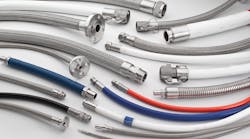NSF International has published the first in a series of American National Standards for Ground-Source Geothermal Piping Systems – NSF/ANSI 358-1. This new standard, which will be referenced in the 2015 International Mechanical Code, is intended to provide engineers, regulators and users assurance that certified geothermal products meet minimum performance and safety requirements.
According to NSF International, geothermal piping systems have gained popularity in recent years for residential and commercial building applications due to their low operating costs and environmental impact, long-term durability and ease of retrofitting. The International Ground Source Heat Pump Association (IGSHPA) reports that geothermal heating systems can reduce energy consumption by 20-50 percent and last up to 50 years.
To help support the acceptance of geothermal pipe in the marketplace, NSF International worked with expert engineers, piping manufacturers, and academic and regulatory representatives to develop the consensus-based standard. NSF/ANSI 358-1: Polyethylene Pipe and Fittings for Water-Based Ground-Source “Geothermal” Heat Pump Systems establishes minimum physical and performance requirements for geothermal piping system components, including long-term strength and quality control requirements that are key to ensuring product performance in the field. Additionally, NSF International says the standard incorporates key requirements from standards developed by the American Society for Testing and Materials (ASTM), Canadian Standards Association (CSA), and the American Water Works Association (AWWA).
The NSF is an independent global organization that writes standards, and tests and certifies products for the water, food, health sciences and consumer goods industries. For more information visit www.nsf.org.


